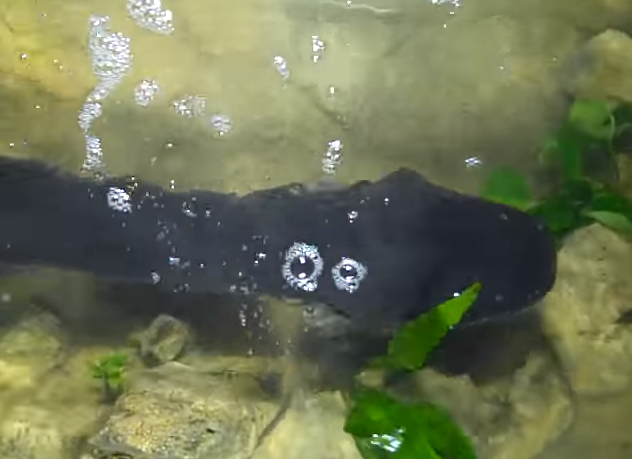October 22, 2015 report
Electric eels found to use jolt also for electrolocation

(Phys.org)—Kenneth Catania, a biological scientist with Vanderbilt University, has found evidence that suggests that electric eels use their electrical powers to both stun prey and to find them. In his paper published in the journal Nature Communications, he describes the study he undertook of the eels in his lab and how he showed that they use electrolocation to find the prey they have stunned.
Contrary to popular belief, the jolt of electricity administered by an electric eel (which the eel stores in cells known as electrocytes—similar to a battery) is not meant to kill prey, but instead is meant to stun it into submission by causing its muscles to spasm uncontrollably (like a taser) leaving it unable to swim away. But, logic suggests that would not be enough, after all the eel lives in the murky depths of the Amazon River where it is difficult to see very far. A fish that was stunned while moving fast would keep on moving for a little while due to simple momentum—so, how does the eel find the fish it just stunned? Catania suggests by using a skill very similar to bats—by sensing where they are using the very same electricity they used to stun it.
Catania came to this conclusion by running two sorts of tests in his lab—the first involved putting a fish (prey) that had been made brain dead and insulated to prevent them from being shocked into a tank with various eels and then causing the fish to flinch with an electrode. The eels behaved as if confused—instead of consuming the fish, they wandered aimlessly, suggesting they could not find them. When he added charged metal and uncharged plastic rods to the tank, the eels tended to move towards the metal rod after trying to shock the fish, instead of the fish, but never towards the plastic rod.
In the second set of tests, Catania attached various objects to a spinning wheel, only one of which was electrically conductive, and then incited the eels to strike under different conditions—the eels regularly went for the conductive object, and ignored the others indicating very strongly that they were using their own electrical charge as a means for finding prey after stunning it.
Taken together the experiments show that electric eels do indeed use electrolocation to find prey after stunning it.
More information: Kenneth C. Catania. Electric eels use high-voltage to track fast-moving prey, Nature Communications (2015). DOI: 10.1038/ncomms9638
Abstract
Electric eels (Electrophorus electricus) are legendary for their ability to incapacitate fish, humans, and horses with hundreds of volts of electricity. The function of this output as a weapon has been obvious for centuries but its potential role for electroreception has been overlooked. Here it is shown that electric eels use high-voltage simultaneously as a weapon and for precise and rapid electrolocation of fast-moving prey and conductors. Their speed, accuracy, and high-frequency pulse rate are reminiscent of bats using a 'terminal feeding buzz' to track insects. Eel's exhibit 'sensory conflict' when mechanosensory and electrosensory cues are separated, striking first toward mechanosensory cues and later toward conductors. Strikes initiated in the absence of conductors are aborted. In addition to providing new insights into the evolution of strongly electric fish and showing electric eels to be far more sophisticated than previously described, these findings reveal a trait with markedly dichotomous functions.
Journal information: Nature Communications
© 2015 Phys.org


















